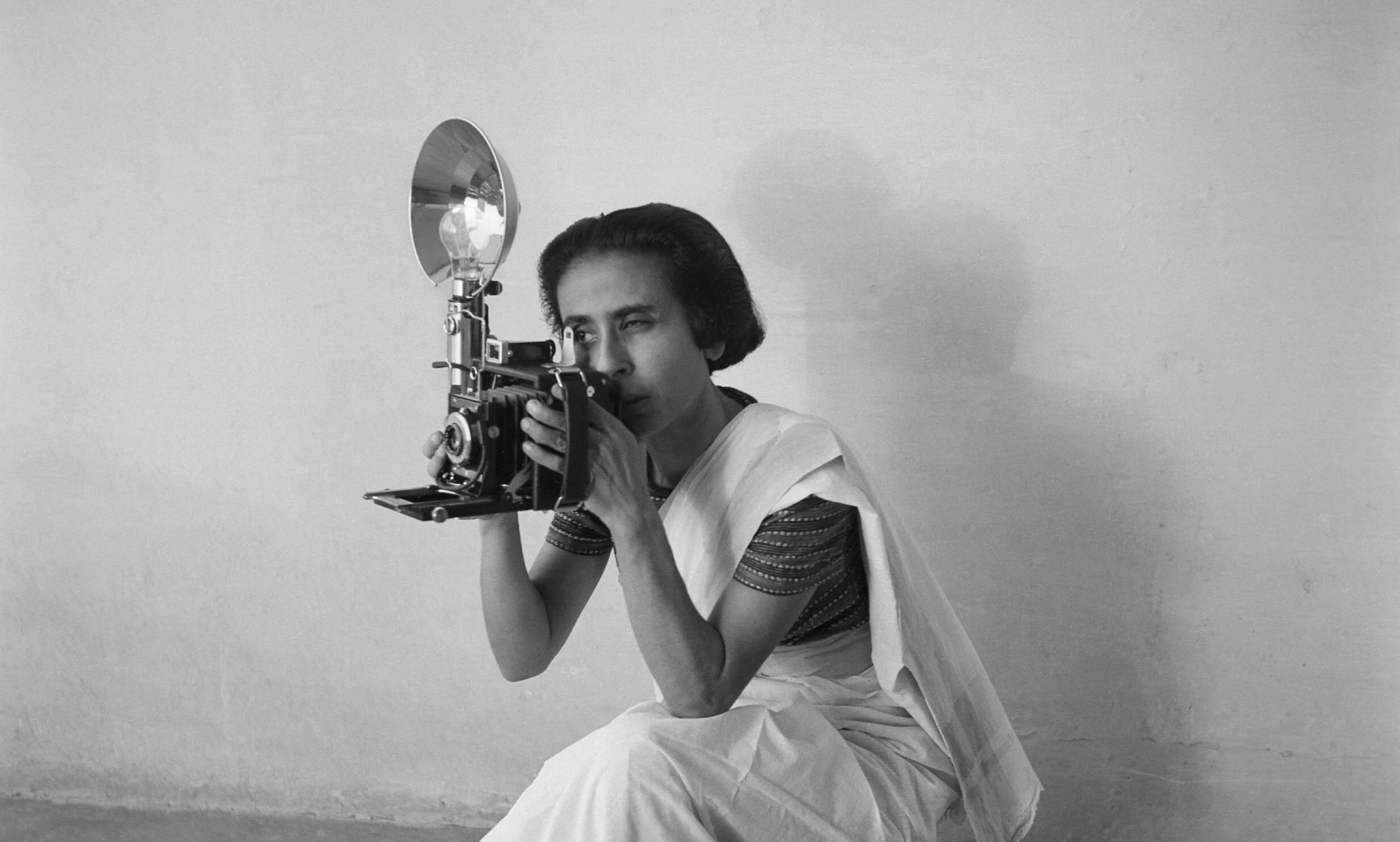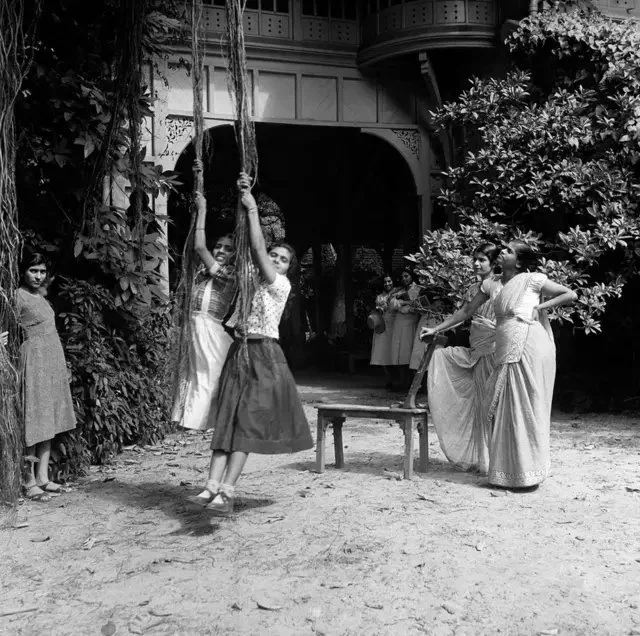The legacy of “Dalda 13”: India’s First Female Photojournalist
Homai Vyarawalla is celebrated as a trailblazer whose images captured the emergence of modern India. Her work not only documented historical milestones during a time of monumental change but also redefined the role of women in photojournalism. Today, her photographs are preserved in the collections of the Alkazi Foundation for the Arts and the National Gallery of Modern Art in New Delhi, ensuring that her legacy continues to inspire even if her camera never got a chance to complain about all the heavy lifting.
Homai Vyarawalla, India’s first female photojournalist, photographed in 1950. Source: Museum of Art & Photography, Bangalore
“I hadn’t the slightest clue I would be a photographer. I wanted to be a doctor but that was the only time in my life that my mother refused to let me do something. She had seen doctors on late-night shifts and didn’t want me in a profession like that. Little did she realize that press photography would be far worse!” -Homai Vyarawalla
In recent decades, renewed interest in her work has brought her extraordinary contributions back into public view. A documentary titled Three Women and a Camera, released in 1998, sparked the revival of her legacy. Later, Sabeena Gadihoke's biography, Camera Chronicles of Homai Vyarawalla, published in 2006, further cemented her reputation. The Government of India recognised her lifelong achievements by bestowing the Padma Vibhushan in 2011, a prestigious award that brought her joy until her passing in 2012.
Before these honours, Homai established herself as a leading figure in a male-dominated profession. Born in 1913 into a Parsi family in Navsari, Gujarat, she spent her early years immersed in the arts thanks to her father, an actor who toured with his theatre troupe.
After the family settled in Bombay, her mother encouraged her to pursue higher education. Homai went on to earn degrees in teaching and art from Bombay University and the Sir JJ School of Art. During this time, she encountered photography through Maneckshaw Vyarawalla, a photographer with The Times of India.
Their bond eventually led to marriage in 1941. It marked the beginning of her lifelong passion for capturing life through the lens, which would later be nicknamed Dalda 13, partly because even her alias had a quirky sense of style. Before her rise to prominence in New Delhi, Homai had already made her mark in Bombay by photographing vibrant urban life and the spirit of modern women. Using a Rolleiflex camera, she produced images that appeared in the Bombay Chronicle as early as 1939.




J.J. School of the Arts, Bombay, late 1930s.
During the turbulent years of the Second World War, she moved to New Delhi with her husband in 1942 on the recommendation of Stanley Jepson, the editor of the Illustrated Weekly of India. While her husband briefly worked with the British Information Service, she became a full-time press photographer. Her art school background proved invaluable in composing images for government, advertising, and information purposes.
And if that list doesn't impress you, wait until you hear about her transition from a Speed Graphic camera to sleeker models from Contax, Nikon, and Pentax. She practically puts the "snap" in snap decisions.
Homai Vyarawalla's legacy is built on more than just her impressive catalogue of photographs. It is a story of resilience, innovation, and an unwavering commitment to truth. Her lens captured not only the political milestones of a nation in transition but also the delicate, unguarded moments that revealed the soul of a people.
Image taken by Homai Vyarawalla by Aakriti Art Gallery
During the turbulent years of the Second World War, she moved to New Delhi with her husband in 1942 on the recommendation of Stanley Jepson, the editor of the Illustrated Weekly of India. While her husband briefly worked with the British Information Service, she became a full-time press photographer. Her art school background proved invaluable in composing images for government, advertising, and information purposes.
Images from Aakriti Art Gallery
She left an indelible mark on photojournalism, not just through the images she captured but through how she approached her craft with precision, artistry, and an eye for the decisive moment. Her pioneering spirit inspires new generations of photographers who look to her work as a masterclass in visual storytelling.
Homai Vyarawalla photographing Ganesh Chaturthi at Chowpatty beach, Bombay, late 1930s. Courtesy the Homai Vyarawalla Archive / Alkazi Collection of Photography
Homai documented history as it unfolded, capturing the grandeur of national events and the subtle human emotions behind them. Her story remains an integral and occasionally amusing part of India's cultural history, reminding us of the power of a single lens to shape collective memory.
Homai Vyarawalla on a shoot in the Chambal Valley, 1950s. Courtesy the Homai Vyarawalla Archive / Alkazi Collection of Photography















